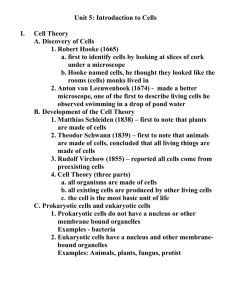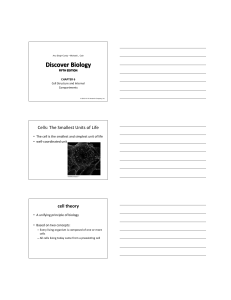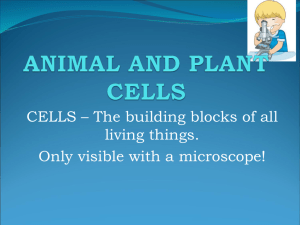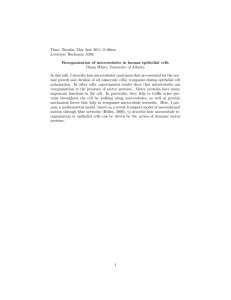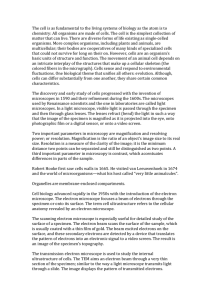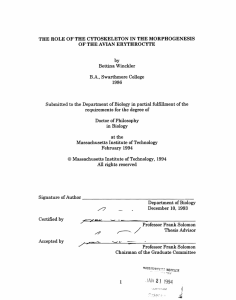Microtubules and Microfilaments
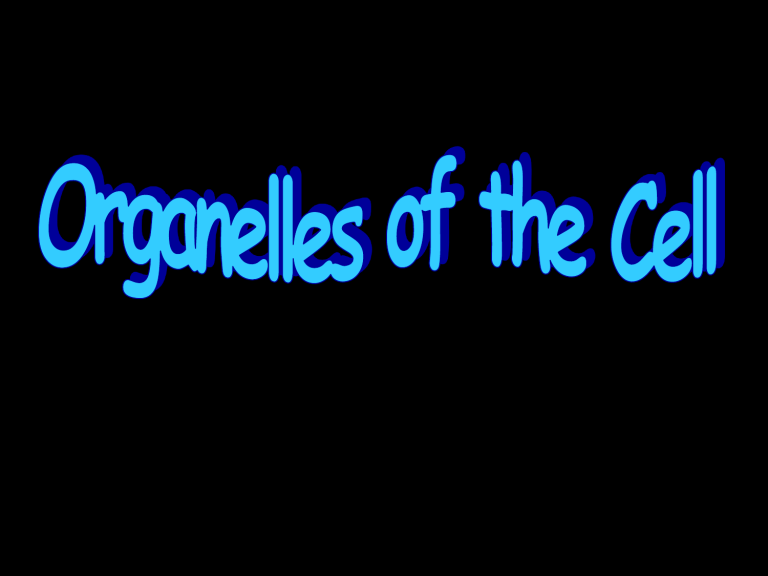
Plasma Membrane
• Helps maintain Homeostasis
• Present in all cells
• Flexible boundary between the cell and its environment to allow nutrients and wastes to enter and exit
Cytoskeleton
• Supportive network of proteins that helps to form a frame work for cells
– Just like your skeleton supports YOU!
• Composed of rods/filaments (Microtubules and
Microfilaments) that can be rearranged to meet the needs of the cell
– Think of poles that maintain the shape of a tent.
• They also help to anchor and support many organelles and provide a highway system through which materials move in and out of the cell.
• Found in BOTH!
Microtubules/Microfilaments
• Thin hollow tubes made of proteins
• Acts as “tracks” to move organelles
• Smaller, solid protein fibers
– Think of small threads
• Enable the cell to move and divide
• Help muscles contract and relax
Work together
Both work to anchor and support many organelles
Provides a highway system for materials to move within a cell
Microfilaments/Microtubules
Cytoplasm
• fills the space between the nucleus and the cell membrane
• Clear, gelatinous fluid portion is called cytosol and is mainly water
• Location of all other organelles
• Found in all Cells
Nucleus
• Cell Control Center
• Contains the directions to make proteins
• Two main jobs is to protect the DNA and make sure that
DNA is always available for use.
• Found in all cells
Nuclear Membrane and
Nuclear Pores
• Located outside of the nucleus
• Also called Nuclear envelope
• Made up of a double membrane containing two phospholipid bilayers
• Contains small nuclear pores
– Allow substances to pass from the nucleus to cytoplasm
Nucleolus
• Located within the nucleus
• Responsible for making ribosomes
Endoplasmic Reticulum
• A folded membrane that forms a network of interconnected compartments in the cytoplasm
• The location of cellular chemical reactions
• Found in Both types of cells
• Rough ER – contains ribosomes that are attached to the surface, it is involved in the transport, storage, making and modifying of proteins.
• Smooth ER- production and storage of lipids, contains NO ribosomes
Ribosomes
• Site of protein synthesis (make proteins)
– They link amino acids together
• Can be found floating in the cytoplasm,
BUT most of the time they attach to the
Endoplasmic Reticulum
• Found in all cells
Golgi Apparatus
• Closely stacked, flattened membrane sacs
• Modify, collect, and sort proteins into packages and distributes proteins produced by the cell
• Found in both plants and animals
vesicles
• General name for little membrane-bound sacs that transport materials from place to place in the cell
• Short-lived, they form and break-down as needed
• Example: after a protein is made in the ribosome, part of the ER will pinch off and form a vesicle to transport the protein to the golgi apparatus.
Mitochondria
• Power House of the cell
• Produces a usable form of Energy for the cell
• Found in both plants and animals.
Vacuole
• Fluid filled sac used to temporarily store food, water, enzymes, and waste
• Singular and large in plant ce;;s, small and numerous in animal cells
Lysosome
• Contains digestive enzymes which help them to digest excess or worn-out cell parts, food and invading viruses and bacteria
• More numerous in animal cells.
Centrosome & Centriole
• Found in animal cells and some algae
• Small region of the cytoplasm that produces microtubules
• Contains small structures called centrioles
– Occur in pairs
– Made of microtubules
– Help with Cell Division
– Organize microtubules to form cilia and flagella
Flagellum & Cilia
• Made of microtubules
• Aid in cell locomotion and feeding (help to move liquids past a cell)
• Short numerous projections
• Look like hairs
• Function like oars in a rowboat
• Longer than cilia
• Move with whip-like motion
• Aid in cell locomotion and feeding (help to move liquids past a cell) • Usually only has 1-2 flagellum
• Found in Some Animal Cells
Flagellum
& Cilia
Cell Wall
• Firm, protective, supportive structure that gives the cell its shape
– Made of cellulose
• Porous –there are channels that allow all molecules to enter through it.
• Found in most bacteria, fungi, algae and plants
Chloroplasts
• In inner membrane there are disc-shaped sacs called thylakoids that contain chlorophyll
– which is a green pigment that traps
Energy from the Sun
• Give plants their green color (only in plants!)
• Produce food by capturing light energy and converting it into chemical energy.


